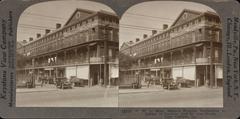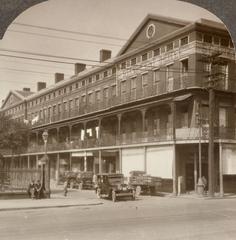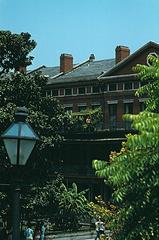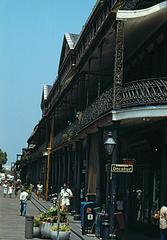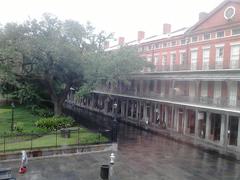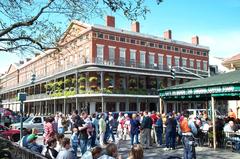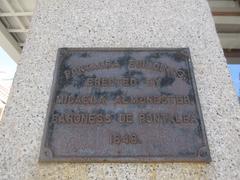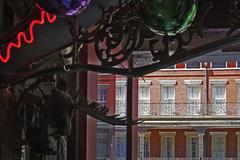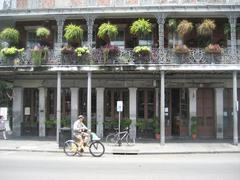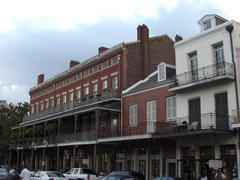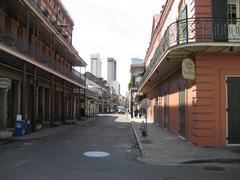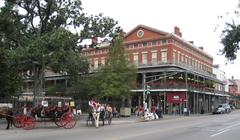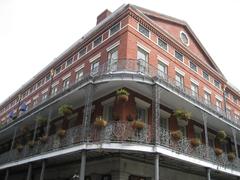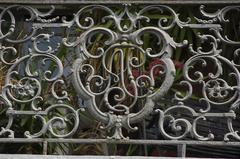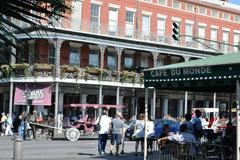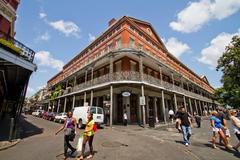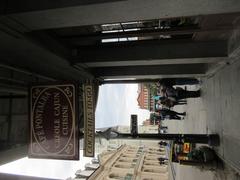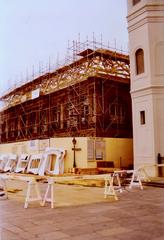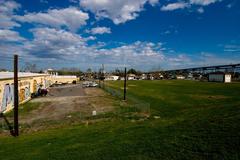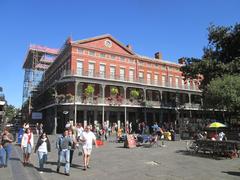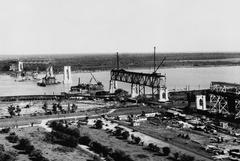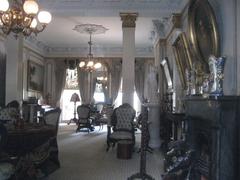
Comprehensive Guide to Visiting Lower Pontalba Building New Orleans, United States
Date: 31/07/2024
Introduction
The Lower Pontalba Building is an architectural gem and a historical anchor in the heart of New Orleans’ vibrant French Quarter. Constructed between 1849 and 1851, the building was commissioned by Baroness Micaëla Almonester de Pontalba, a notable figure in New Orleans’ storied past (64 Parishes). Designed by architect Henry Howard, the Lower Pontalba Building and its twin, the Upper Pontalba Building, reflect a Parisian influence with their red-brick facades, pedimented pavilions, and elaborate cast iron verandas—elements that have since become iconic in New Orleans’ architectural landscape (Four Winds NOLA).
The significance of the Lower Pontalba Building extends beyond its architectural beauty. It has weathered the tumultuous history of New Orleans, including the post-Civil War decline of the Vieux Carré and subsequent restorations funded by the Works Progress Administration in the 1930s (SAH Archipedia). Today, it is not only a preserved historical site but also a bustling hub for residential, commercial, and cultural activities. The Louisiana State Museum’s 1850 House provides visitors with a unique glimpse into mid-19th century life, adding educational value to its cultural significance (Louisiana State Museum).
This comprehensive guide aims to explore the Lower Pontalba Building’s rich history, its architectural and cultural importance, and provide essential visitor information to enhance your experience. Whether you’re a history enthusiast, an architecture aficionado, or simply a curious traveler, this guide will equip you with everything you need to know for an enriching visit to one of New Orleans’ most iconic landmarks.
Table of Contents
- Introduction
- History of the Lower Pontalba Building
- Visitor Information
- Guided Tours and Photographic Spots
- Conclusion
- References
History of the Lower Pontalba Building
Early Development and Construction
The Lower Pontalba Building, along with its twin, the Upper Pontalba Building, was constructed between 1849 and 1851. These iconic structures were commissioned by Baroness Micaëla Almonester de Pontalba, a wealthy and influential figure in New Orleans’ history. The Baroness was the daughter of Don Andrés Almonaster y Roxas, a prominent Spanish colonial landowner who had acquired the land piecemeal between 1777 and 1782 (64 Parishes).
The site of the Pontalba Buildings was initially designated in 1721 by French military engineers Pierre Le Blond de la Tour and Adrien de Pauger as the center of New Orleans’ public, religious, and governmental activities. However, the early French colonial structures were poorly constructed and did not withstand the harsh southern Louisiana climate. By 1759, these buildings had either collapsed or were destroyed by hurricanes, leaving the area vacant until the Spanish period (64 Parishes).
Architectural Significance
The Pontalba Buildings are renowned for their architectural grandeur and historical significance. Designed by architect Henry Howard, the buildings feature a distinctive Parisian influence, reflecting the Baroness’s taste and vision. Each building comprises sixteen elegant townhouses on the upper floors and commercial spaces on the ground floors. The structures are characterized by their red-brick facades, pedimented central and end pavilions, and intricate cast iron verandas, which were the first recorded use of iron railings in New Orleans (Four Winds NOLA).
The cast iron work, designed in an intricate, lacy pattern, became a hallmark of New Orleans’ residential architecture. The verandas’ design, possibly contributed by the Baroness’s youngest son, Gaston, who created a series of sketches of the French Quarter during the buildings’ construction, set a trend for iron galleries throughout the city (64 Parishes).
Transformation and Decline
Following the Civil War, the Vieux Carré, the historic heart of New Orleans, experienced a significant decline. By the time the Louisiana State Museum acquired the Lower Pontalba Building in 1927 and the City of New Orleans acquired the Upper Pontalba Building in 1930, the structures had deteriorated into shabby tenements (SAH Archipedia).
In the mid-1930s, both buildings underwent extensive remodeling funded by the Works Progress Administration (WPA). This renovation transformed the buildings into apartments, restoring their residential use. A subsequent restoration in the 1950s by Koch and Wilson, Architects, further revitalized the buildings, preserving their historical and architectural integrity (SAH Archipedia).
Cultural Impact and Preservation
The Pontalba Buildings have played a significant role in New Orleans’ cultural and literary history. Over the years, they have housed several notable authors, including Sherwood Anderson, William Faulkner, and Katherine Anne Porter. The Louisiana State Museum’s 1850 House, located in the Lower Pontalba Building, showcases the original configuration of the second- and third-floor residential spaces, providing visitors with a glimpse into mid-19th century life in New Orleans (SAH Archipedia).
In 1974, the Pontalba Buildings were declared a National Historic Landmark, recognizing their early and distinctive architecture and their contribution to the historical landscape of the French Quarter (Four Winds NOLA).
Visitor Information
Visiting Hours and Tickets
The Lower Pontalba Building and the 1850 House Museum are open to visitors throughout the week. The museum operates from Tuesday to Sunday, 10 AM to 4:30 PM. Tickets can be purchased at the entrance or online through the Louisiana State Museum’s website. General admission is $5 for adults, $4 for students and seniors, and free for children under six (Louisiana State Museum).
Travel Tips and Nearby Attractions
Located in the heart of the French Quarter, the Lower Pontalba Building is easily accessible by public transportation and offers limited nearby parking options. Visitors can explore nearby attractions, including Jackson Square, St. Louis Cathedral, and the French Market, making it a perfect stop on a French Quarter tour.
Accessibility and Special Events
The Lower Pontalba Building is committed to accessibility, offering ramps and elevators for visitors with mobility issues. Special events and exhibitions are held throughout the year, so checking the museum’s event calendar is recommended before planning your visit.
Guided Tours and Photographic Spots
Guided tours of the 1850 House Museum are available for those interested in a deeper historical dive. Both docent-led and self-guided tours offer insights into the lifestyle of upper-middle-class families during the antebellum period. The picturesque architecture of the Lower Pontalba Building provides numerous photographic spots, including the iconic iron verandas and the central court.
Conclusion
The Lower Pontalba Building stands as a testament to the rich history and architectural heritage of New Orleans. From its early development and construction to its transformation and modern-day use, the building encapsulates the city’s resilience and cultural vibrancy. Visitors to the Lower Pontalba Building can not only enjoy its historical significance but also partake in the lively commercial activities that continue to define this iconic landmark. Download our mobile app, Audiala, for more information, and follow us on social media for updates on special events and tours.
